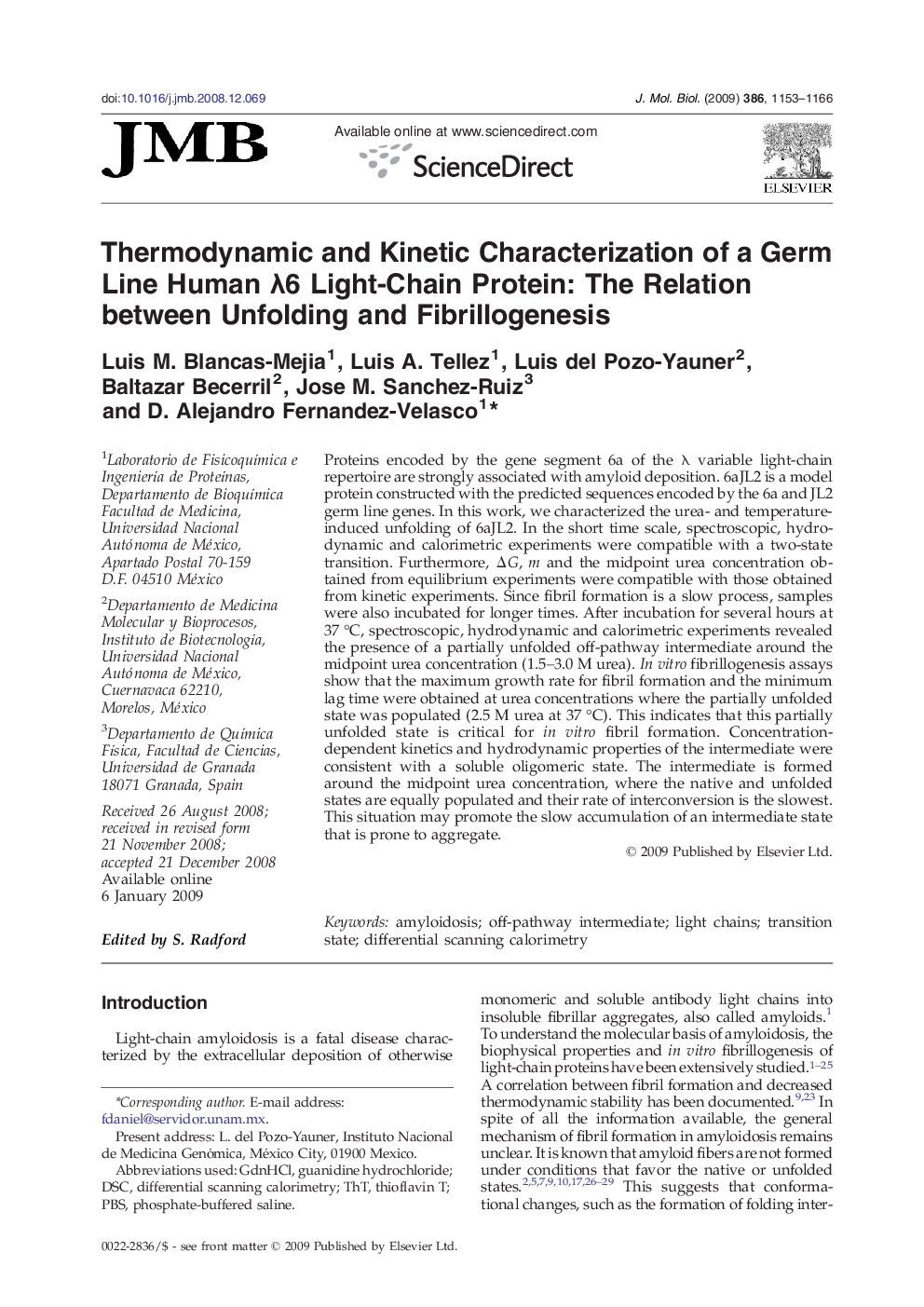| Article ID | Journal | Published Year | Pages | File Type |
|---|---|---|---|---|
| 2186719 | Journal of Molecular Biology | 2009 | 14 Pages |
Proteins encoded by the gene segment 6a of the λ variable light-chain repertoire are strongly associated with amyloid deposition. 6aJL2 is a model protein constructed with the predicted sequences encoded by the 6a and JL2 germ line genes. In this work, we characterized the urea- and temperature-induced unfolding of 6aJL2. In the short time scale, spectroscopic, hydrodynamic and calorimetric experiments were compatible with a two-state transition. Furthermore, ΔG, m and the midpoint urea concentration obtained from equilibrium experiments were compatible with those obtained from kinetic experiments. Since fibril formation is a slow process, samples were also incubated for longer times. After incubation for several hours at 37 °C, spectroscopic, hydrodynamic and calorimetric experiments revealed the presence of a partially unfolded off-pathway intermediate around the midpoint urea concentration (1.5–3.0 M urea). In vitro fibrillogenesis assays show that the maximum growth rate for fibril formation and the minimum lag time were obtained at urea concentrations where the partially unfolded state was populated (2.5 M urea at 37 °C). This indicates that this partially unfolded state is critical for in vitro fibril formation. Concentration-dependent kinetics and hydrodynamic properties of the intermediate were consistent with a soluble oligomeric state. The intermediate is formed around the midpoint urea concentration, where the native and unfolded states are equally populated and their rate of interconversion is the slowest. This situation may promote the slow accumulation of an intermediate state that is prone to aggregate.
